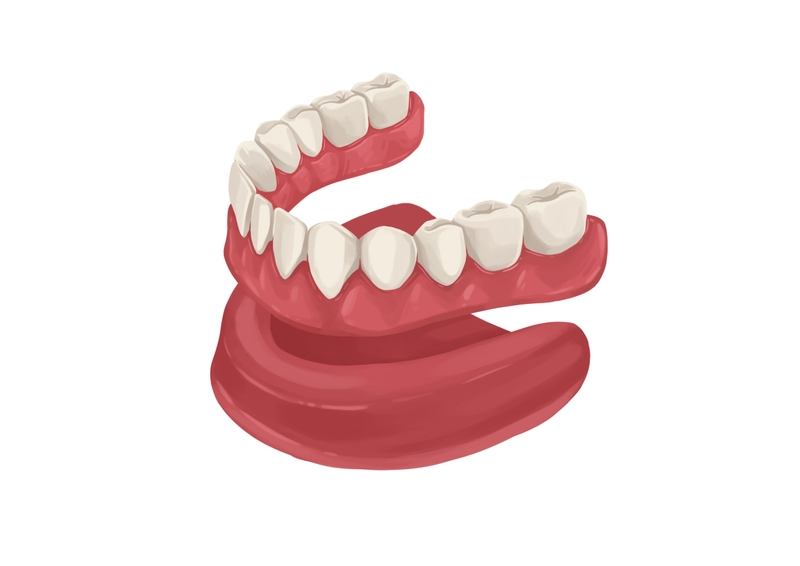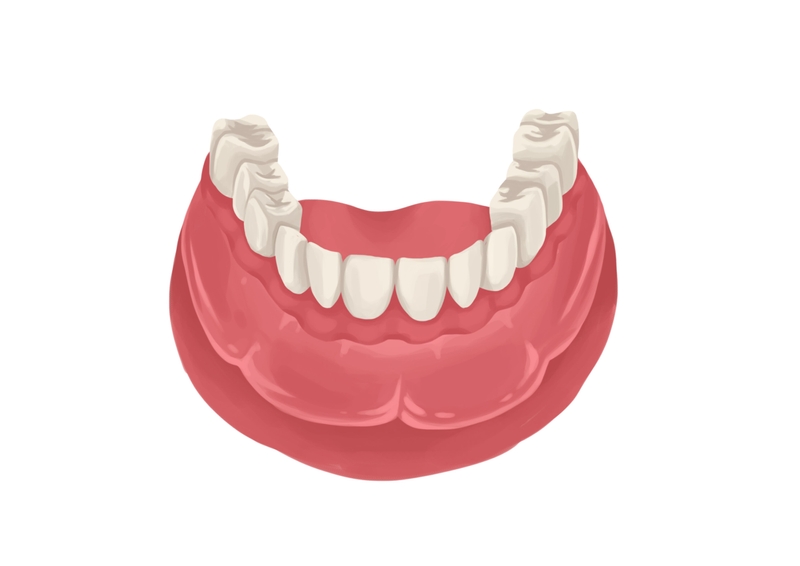- It is normal to feel discomfort with a new lower denture at first. If you cannot get used to it, it may indicate that your denture is too big or lacks sufficient support.
- You can try a denture adhesive or relining your denture to make it fit better.
- Placing implants can help keep your denture stable.
Use Authority Dental to book an appointment for the affordable dentures near you, or get a dental plan and save big on all dental procedures, including dentures.
Why do your lower dentures feel uncomfortable? Here's everything you need to know.
What causes lower denture problems?

Picture by Authority Dental under CC 2.0 license
A variety of issues can cause a denture complaint. If you have a lower denture, you are likely to experience some of these issues over time.
There is insufficient bone ridge (or a flat bone) to support the denture. Nothing for it to hold onto.
The denture teeth do not align with the maxillary denture or natural teeth.
There is inadequate denture border length. The dentures do not extend far enough back.
The patient is an inpatient or has not had enough practice using them.
How to keep bottom dentures in place?

Picture by Authority Dental under CC 2.0 license
There are a few ways to keep your traditional dentures in place. You may only need to use one of these, or you may have to try all of them.
"Why is the lower arch so much harder than the upper? Simply put, physics is not on our side. The maxillary (upper) denture benefits from the palate, creating a large suction area—think of it like a big, stable suction cup," Lee explains, adding "The mandibular (lower) denture, however, sits on a narrow, moving ridge of bone. The tongue is constantly shifting, and the floor of the mouth muscles are trying to lift it out. It is an active battle for retention."
Take time to practice
Dentures take practice. Whether you are getting used to an upper denture, a lower denture, or both, they will not work perfectly right away. You might notice movement or rocking when you eat, and even a lisp or other speech impediment when you talk.
Practice speaking when you are alone. You can read aloud from a book or sing to the radio. When eating, try placing food on both sides of your mouth so they take the same amount of force - this prevents excessive pressure on one side, which can cause them to rock and become loose. The more you practice, the easier it will be to keep your dentures in place.

Use denture adhesive
Most people who wear dentures need an adhesive to retain their dentures, especially in the lower arch. You can use a paste or strips, whichever you prefer. It is important to remove all adhesive each night before soaking your dentures.
Get denture relined
Over time, the bone that supports your denture will remodel. The body recognizes that there are no remaining teeth to support, so the bone begins to resorb. That causes the denture not to fit as snugly, so you will need to have it relined occasionally. This is common during the first six months after your denture is made, especially if you recently had your teeth extracted. You should ask your local denture lab about denture relining to help it fit more securely on the bone.
Consider implants solutions
If too much bone has been lost, a lower removable denture may not stay in place, regardless of how many relines you have had or how much adhesive you use. In cases like that, the only option is to add dental implants that will snap your denture in place. You may be able to retrofit your existing regular denture to your new implants, but sometimes a new one must be made.
FAQ
What do bottom dentures look like?
A mandibular denture is a U-shaped appliance that consists of artificial teeth and an acrylic denture base that resembles your natural gum tissue.
Are bottom dentures hard to wear?
Lower dentures can be hard to wear, but some denture wearers find them easier to wear than others. It depends on how much bone loss you have had and how long you have practiced wearing them. Implant dentures are easier to wear than conventional dentures.
How should lower dentures look like?
A lower denture should look like a U-shaped piece that extends slightly beyond the last tooth on either side of the arch.
Harry Lee, DMD
This is a fantastic topic. In my practice, issues with lower dentures or mandibular stability are the ones that lead to the most frustration for patients. It is a common story: a patient comes in with a perfectly made, well-fitting new lower denture, but they cannot keep it steady when they talk or chew.